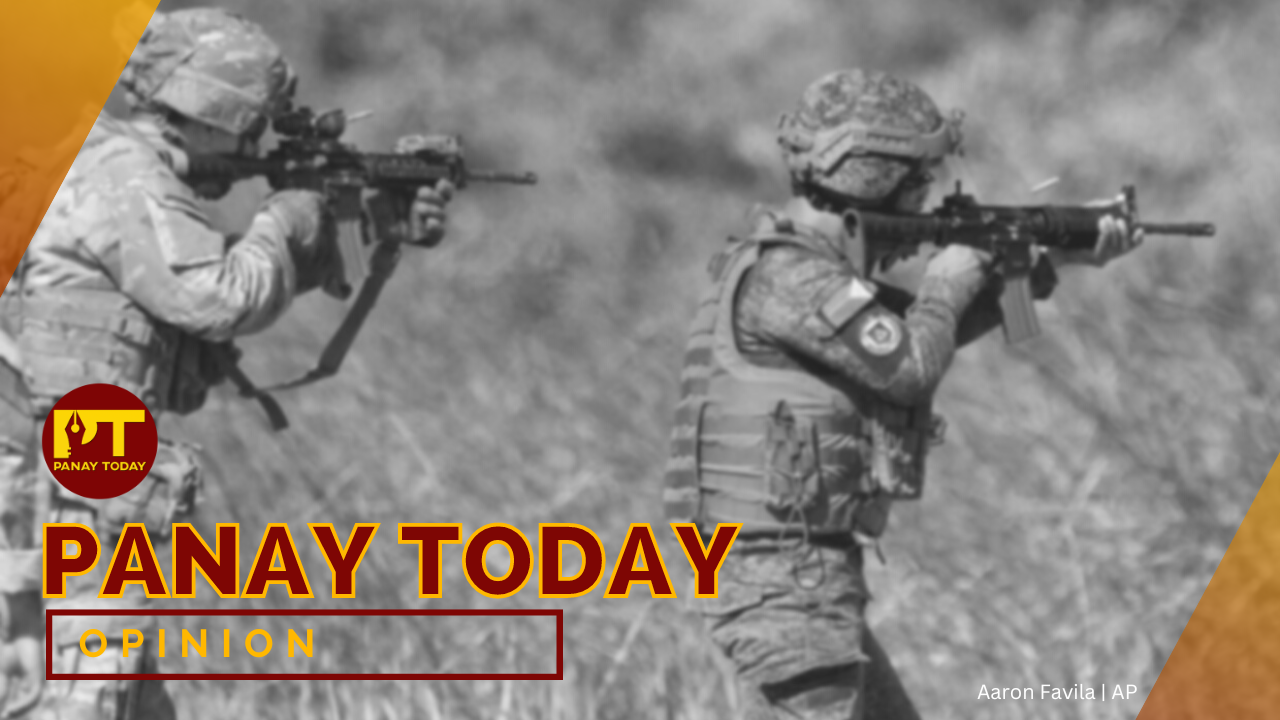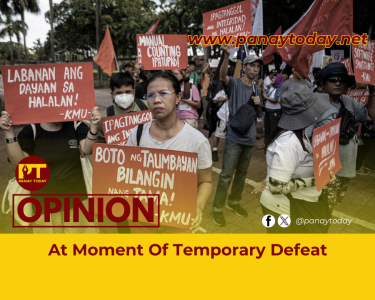WAR CRIMES IN THE PHILIPPINES
April 15, 2023
Angelo Karlo Guillen
The quick action taken by the International Criminal Court in investigating war crimes in Ukraine and issuing a warrant against President Vladimir Putin was loudly applauded in Western countries. It even drew positive remarks from President Joe Biden who said that the move was justified – ironic considering the United States’ position on the ICC. But forgetting for a moment the cacophony of approvals, these developments warrant introspection on how differently governments deal with core international crimes when they take place in areas under their control or influence. A case in point – the Philippines.
For decades, the Philippine government has waged a bloody and relentless campaign of repression against its people, one that saw widespread human rights violations perpetrated by state forces. These atrocities were committed amidst an ongoing armed conflict with a communist-led rebel movement, the National Democratic Front. In its desire to defeat the NDF, however, the government no longer differentiates between rebels and activists, or between combatants and civilians.
Masked as counter-insurgency and counter-terrorism efforts, the Philippine government, through its armed forces, police, and state-backed paramilitary units is responsible for the murder, abduction, torture, and arrest of countless political activists and human rights defenders, development workers helping marginalized communities, farmers fighting for agrarian reform, labor leaders advocating for higher pay or better working conditions, and indigenous peoples resisting development aggression.
Under its whole-of-nation approach, the Philippine government mobilized all agencies for the singular purpose of crushing the rebellion by restricting civil liberties and terrorizing the population in the hope that this would deprive the NDF of popular support. Suspected rebels and sympathizers are either executed or imprisoned on trumped-up charges, evidence is planted to justify warrantless arrests, entire villages are militarized, and people are threatened, harassed, or prosecuted for exercising basic civil rights.
Recently, a draconian anti-terrorism law was also enacted that is now being used against humanitarian workers and activists. Under this law, the government can declare any organization or person as a “terrorist” without a hearing, and state forces can arrest and detain individuals, without a judicial warrant, based on mere suspicion of terrorist activities.
The civilian bureaucracy, including the courts, are likewise complicit as they provide the “legal” means for the commission of human rights violations, such as in the case of the 2020 Tumandok massacre where, on the pretext of enforcing search warrants, the police executed nine leaders of an indigenous community that opposed the construction of a dam on their ancestral land.
The US government has been largely indifferent and silent on these issues, but that silence does not change the fact that war crimes are being committed by a military force trained, equipped, and supported by the United States.
Long before the “pivot to Asia” was announced by the Obama administration, the Philippines – a former American colony – was instrumental in maintaining US military presence in the Asia-Pacific. American bases there were also used for incursions into Korea, Vietnam, and the Persian Gulf. Later, the country was considered a major non-NATO ally and a frontline state in America’s war on terror. The United States has trained generations of Filipino officers and supplied war material to the Philippine armed forces whose tactics are derived from the US counter-insurgency playbook.
Today, the Philippines is even more essential to Washington’s plan to rebalance its forces in a bid to contain China and protect US economic, security, and foreign policy interests in the region. Small as it is, the Southeast Asian nation is strategically-situated, with access to the South China Sea and the Pacific, and forms part of the US military’s first island-chain surrounding the Chinese mainland.
The US and the Philippines have signed multiple agreements allowing the US to use, rent-free, nine military bases across the country for an increased and virtually permanent presence of American troops and contractors, aircraft, and ships, as well as the pre-positioning of US weapon systems and supplies. In practical terms, the Philippines is one large forward operating base that serves as a staging point for US operations in East Asia.
Joint exercises by the US and Philippine armed forces also grew significantly over the years. The two countries conducted 1,321 bilateral military exercises in the 2015-2020 period alone, while the largest yet is being held this year with 12,000 American soldiers taking part.
The Philippines is also the largest recipient of US military assistance in the Indo-Pacific region, with more than $1.14 billion worth of equipment and training delivered since 2015. In October 2022, active arms sales to the Philippines under the US foreign military sales system was at $1.033 billion, with hundreds of millions more in direct commercial sales.
The majority of Filipinos are mired in poverty and around a quarter of the population live on less than $1.58 a day. Yet the Philippines’ defense budget in 2022 was higher than the allocation for agriculture, nutrition and food security, social protections, public transportation, and the operation of public hospitals. Awash with funds earmarked for its fifteen-year military modernization program, the government has been on a shopping spree for planes, ships, attack helicopters, drones, missiles and bombs, assault weapons and munitions, much of it coming from the US. And as the resources and training of the Philippine military increased, so too did human rights violations in the country.
Between 2016 and 2022 there have been 442 documented cases of extrajudicial killings targeting activists, 233 cases of torture, 4,298 victims of arbitrary arrest, 481,918 persons forcibly displaced due to airstrikes, artillery bombardment, and military operations, and 4,586 victims of restrictions to or violent dispersals of public protests. The Philippines portrays itself as a democratic country that respects constitutional rights and the rule of law. In reality, with each year the government has grown more authoritarian, and the brunt of state repression is borne by its people in terms of lives and liberties lost.
In its desire to keep the Philippines within its fold, the US government conveniently turns a blind eye to war crimes perpetrated by its ally, plays down damning reports from local and foreign human rights groups, and ignores the evident fact that the Philippine military uses American-supplied weapons and training to stifle dissent and terrorize the public.
If the international community is going to call out and investigate excesses in the Russia-Ukraine war, the crackdown in Myanmar, or abuses against the Uyghurs in China, then it must also take action against state-sanctioned atrocities in the Philippines. Aside from the palpable hypocrisy in changing positions and applying different standards when dealing with one’s allies or adversaries, overlooking international crimes for political expediency undermines human rights and humanitarian law, weakens international institutions, and negates efforts to combat impunity. The campaign for justice and accountability cannot be dependent on geopolitical or national security interests; otherwise, it becomes nothing but cheap propaganda that rings hollow to the victims of these horrendous crimes.//





